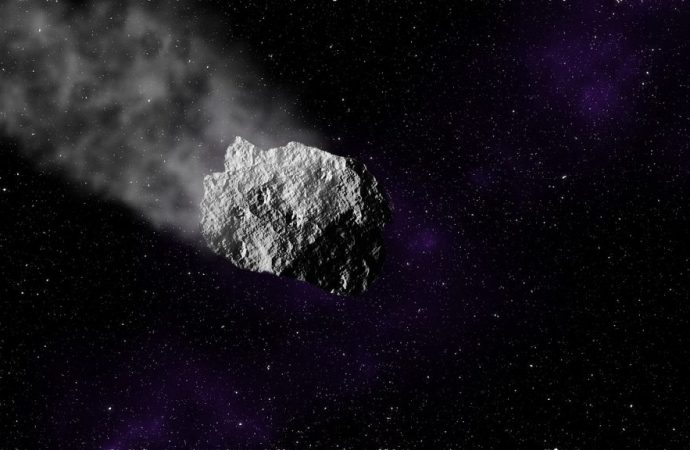According to a report in the Express, citing NASA and ESA sources, a giant 700-foot-wide Asteroid is heading toward Earth. Since it’s located on a risky trajectory, there is a small possibility that it could collide with Earth.
According to the report, the asteroid has the potential of colliding with earth on 62 different impact trajectories, from between 2023 and 2117. Scientists refer to the asteroid as 2018 LF16, observing it for the last time on June 16, according to NASA’s Jet Propulsion Laboratory (JPL). The observations have shown that there are 62 different dates in which the asteroid could collide with Earth, placing it as a potential threat to our planet.
The first potential date of a collision will be on Aug. 8, 2023. There are two other risky trajectories close to the first one occurring on Aug. 3, 2024 and on Aug. 1, 2025. The giant 700-foot-wide asteroid moves through space at a speed of more than 33,844 miles per hour.
NASA’s calculations estimate that there is a one in 30,000,000 chance of the asteroid slamming into Earth, meaning there is a 99,9999967% chance that it’ll miss. That said, the Torino Impact Hazard Scale gives the asteroid a “Zero,” which means that there is almost a nonexistent chance that the asteroid will impact Earth, or nearly as nonexistent as possible.
“A space rock this big is about twice as tall as Big Ben’s clock tower in London, twice the height of the Statue of Liberty in New York, and is four times as tall as Nelson’s Column in Trafalgar Square,” the Express reported.
This almost nonexistent chance of impact is the same as the one that “also applies to small objects, such as meteors and bodies that burn up in the atmosphere – as well as infrequent meteorite falls that rarely cause damage,” the Center for Near Earth Object Studies explained.
Also, as the calculations estimate, the impact force of the asteroid could match the one caused by the Tsar Bomba 50 Megaton blast. This is the most powerful and devastating nuclear device ever detonated on Earth.
Still, as per the report, the European Space Agency (ESA) said that such large asteroids can collide with Earth less than once in 1,000 years, adding that an extinction-level impact would require a much larger asteroid, such as one six-miles-wide. That said, the giant 700-foot-wide Asteroid likely won’t cause the cataclysm.
“Some asteroids are very large, and would cause enormous destruction if any were to strike Earth, but their estimated population in our Solar System is rather small and more than 90 percent of these are thought to have been discovered. None of these pose any risk of impact,” ESA said as per the Express. “Some are very small − below 10m diameter − and only a tiny fraction of the estimated population of these have been discovered, but any impact would be harmless.”
Source: Value Walk

































Leave a Comment
You must be logged in to post a comment.